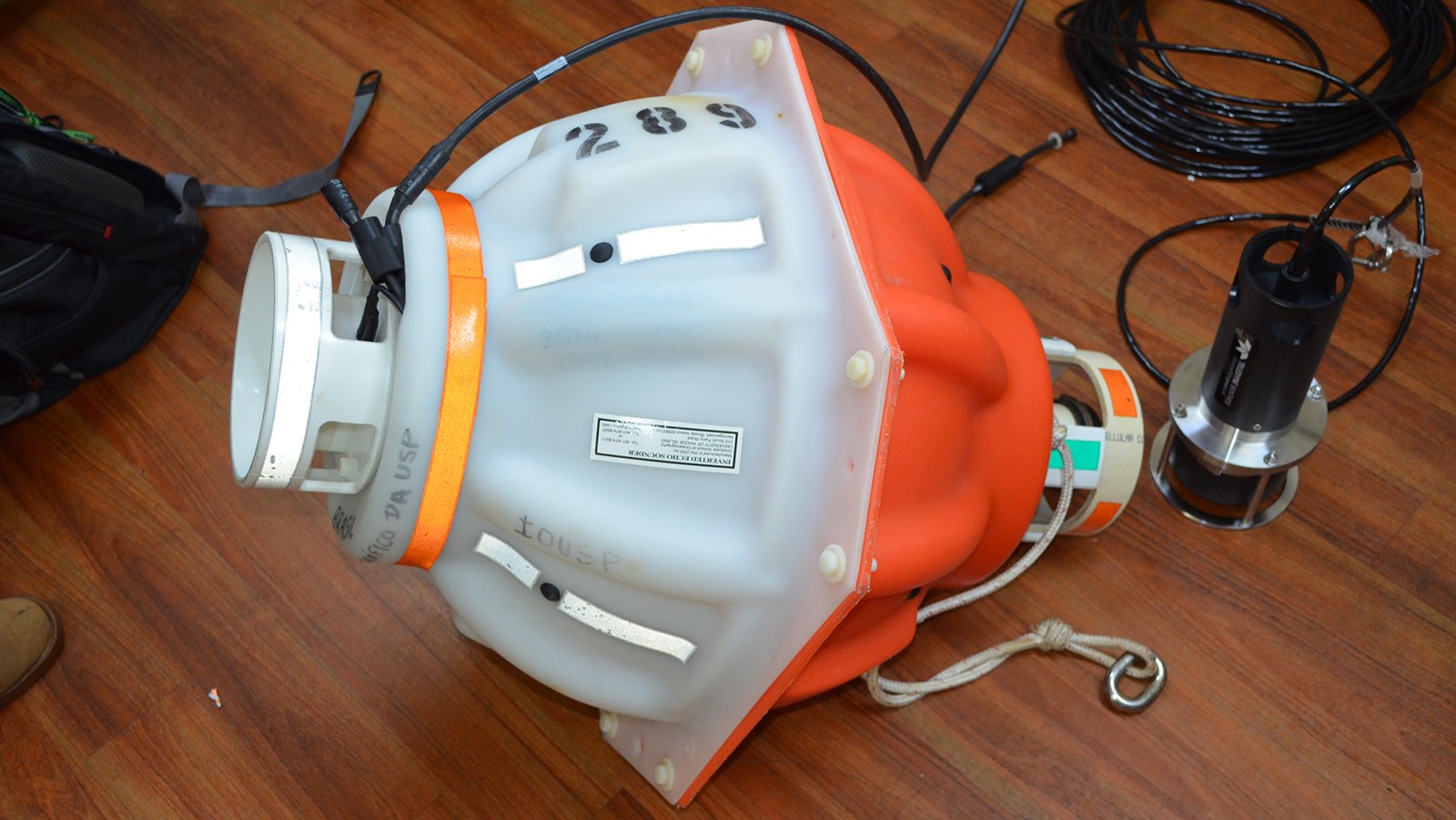After two weeks at sea, the South Atlantic Meridional Overturning Circulation (SAM) project team, led by Renellys Perez and Shenfu Dong, completed its first cruise since June 2019!
The SAM project, which began in 2009, seeks to capture the daily variability of key components of the Meridional Overturning Circulation (MOC) in the under-sampled South Atlantic Ocean. The MOC plays a major role in redistributing heat, salt, dissolved oxygen, nutrients, and carbon throughout the global climate system. Variations of the MOC can have important societal impacts on coastal sea levels, marine heat waves, extreme weather events, and shifts in regional surface temperature and precipitation patterns.
The SAM project is funded by NOAA’s Global Ocean Monitoring and Observing Program and consists of an array of moorings along 34.5° S. The array includes four pressure-equipped inverted echo sounders (PIES) which collect pressure just above the sea floor and vertical acoustic travel time measurements (the time it takes for a sound pulse to travel from the PIES on the seafloor to the sea surface and back). The acoustic travel time measurements are used to generate profiles of temperature, salinity, and density near the western boundary along 34.5° S, off the eastern coast of Brazil. Data from these instruments are used to monitor the southward-flowing Brazil Current and the Deep Western Boundary Current as they carry components of the MOC along the western boundary of the basin. These moorings also collect bottom temperature data, and have been used to generate a 10-year time series of bottom temperature along 34.5° S.
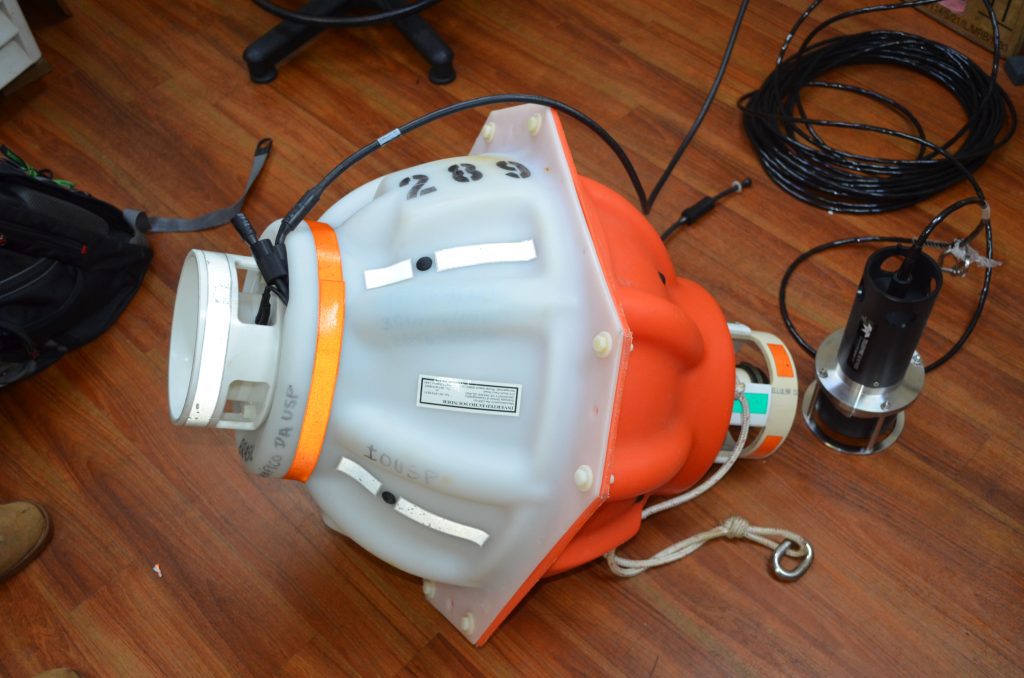
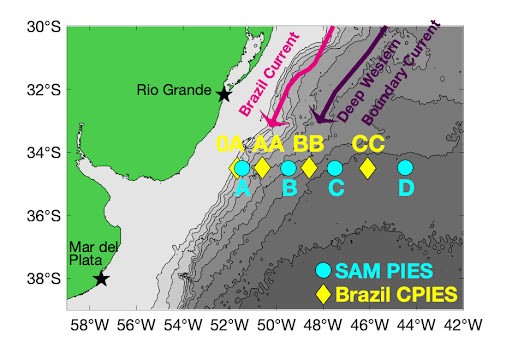
The strength of the SAM array relies on teamwork between international partners. The US, Argentina, and Brazil maintain the array through an informal collaborative agreement – each partner contributes to annual or semiannual fieldwork either with resources (ship-time and equipment) and/or personnel. During these cruises, scientists service any U.S. or Brazilian moorings that need fresh batteries and instruments. If the moorings aren’t scheduled for recovery, the vessel floats within a mile of the mooring and acoustically downloads the bottom pressure and travel time data instead.
Christian Saiz and Diego Ugaz, AOML/CIMAS engineers, participated in the July-August 2022 Brazilian cruise aboard the R/V Alpha Crucis (Chief Scientist: Dr. Olga Sato, University of São Paulo) to attempt to recover and redeploy five PIES moorings. Due to the pandemic, this was the first cruise for the SAM project since June 2019, meaning there have been no recoveries or deployments of moorings, and no acoustic data downloads for over three years. Acoustically downloaded data are only available with low-resolution (i.e., daily values); to get high-resolution (hourly) data researchers must physically bring the instruments out of the water.
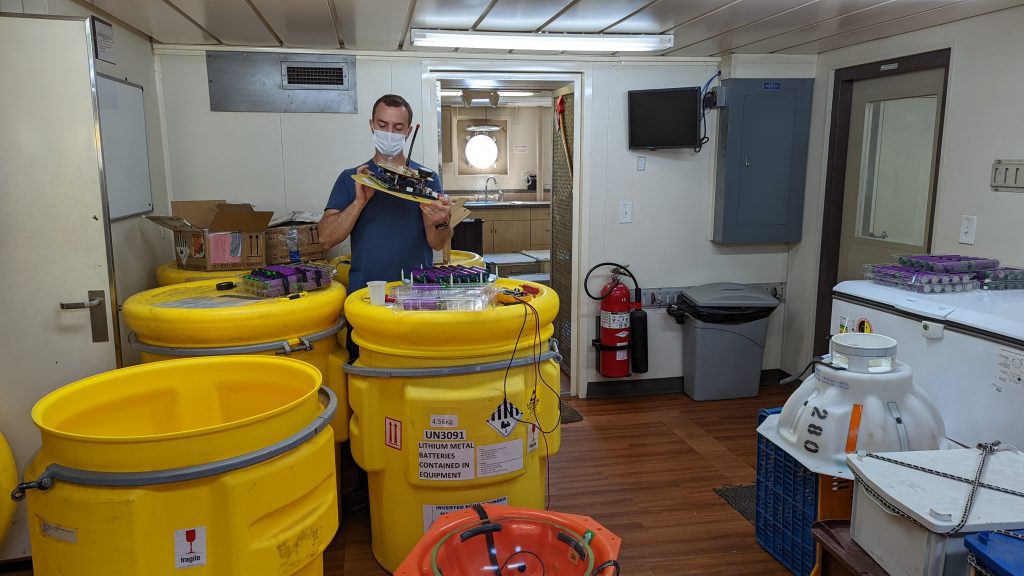
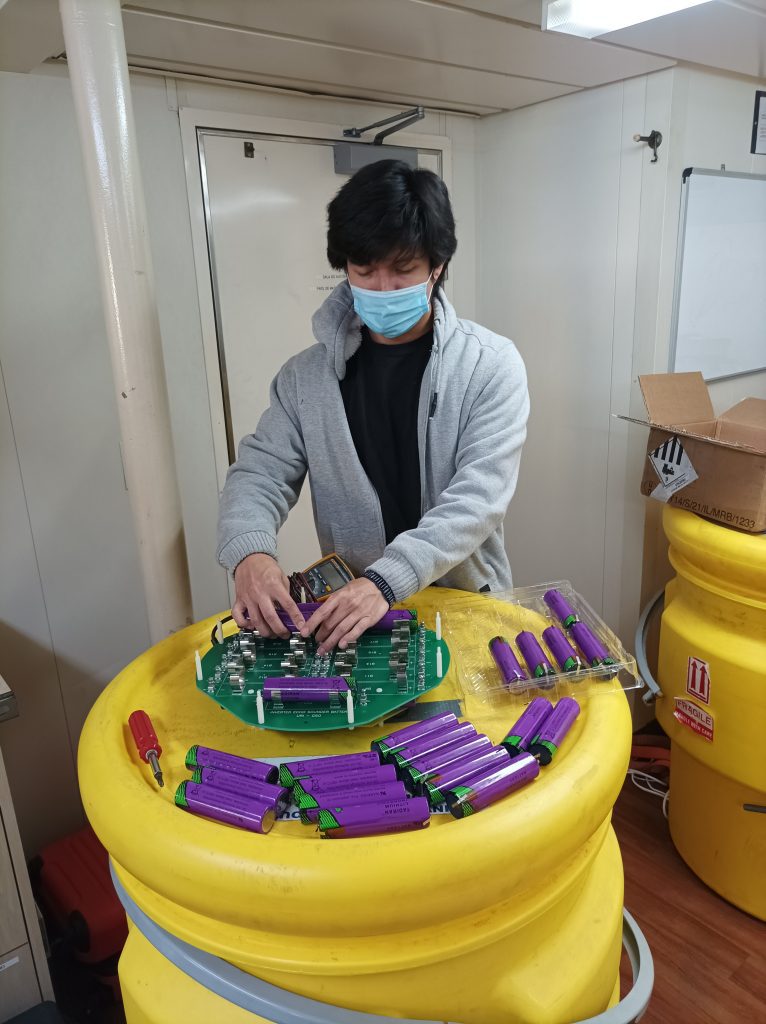
PIES moorings are deployed on the seafloor for four and a half years and are configured with an emergency automatic release that provides scientists with a last chance to recover the mooring (i.e., if the PIES separates from the anchor and floats to the surface there is a small chance it can be recovered, otherwise it will remain on the seafloor). Usually scientists recover the PIES twelve to eighteen months before the emergency auto-release date, but the pandemic delayed operations. Two of NOAA/AOML’s PIES moorings were deployed in April 2018 and were set to auto-release in January-February 2023. If that happened without a ship nearby to pick up the instruments, this would have likely resulted in the complete loss of the instruments and over four years of data.
In spite of rough weather and ship engine difficulties, the cruise visited three of five mooring sites. Thankfully, the two NOAA/AOML moorings set to auto-release were successfully recovered (with all of the data!) and new units were deployed in their place to continue collecting these key time-series measurements. An additional Brazilian mooring was also recovered and redeployed.
In addition to servicing the PIES moorings, CTD-LADCP (Conductivity, Temperature, Depth – Lowered acoustic Doppler current profilers) casts, eXpendable BathyThermograph (XBTs) drops, and water sampling operations were conducted by the Brazilian oceanography Institute in the University of São Paulo and National Institute for Fisheries Research and Development (Argentina) student volunteers and personnel.
Many thanks to Ulises Rivero, Pedro Peña, and other members of the AOML instrumentation group who provided ground support during the cruise.
